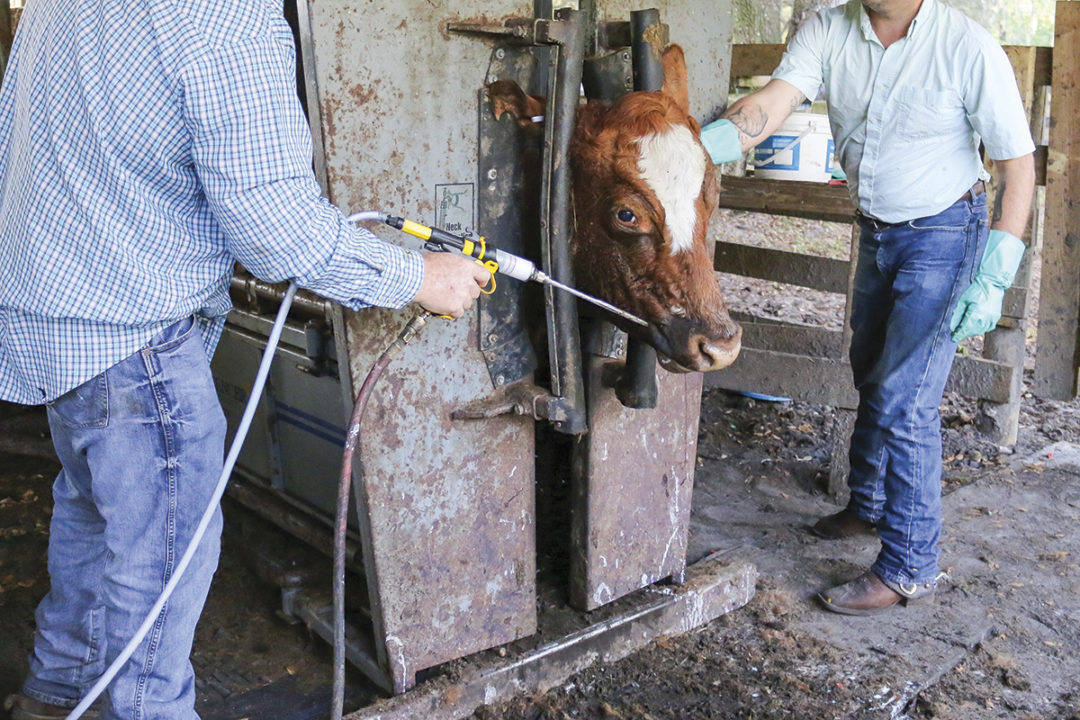You may have heard about parasite resistance before, but what makes it a topic worth talking about? Understanding the what, why and how of the issue can help to ensure your operation has a successful deworming program for many years to come.
What is parasite resistance?
Resistant parasites have a special genetic ability to survive the effects of an anti-parasitic drug that was previously an effective treatment. The product will kill the population of susceptible parasites, but leave the resistant parasites to survive and pass on their resistant genes.
The benchmark for measuring deworming success is a 95% kill rate, based on results from fecal egg count reduction testing. If you are killing less than 95% of parasites when using an appropriate product and dosage, this may indicate the presence of resistant parasites.
Several factors have contributed to the development of the issue. Parasitic nematodes have many characteristics that favor the development of resistance and are known to have an exceptionally high level of genetic diversity. Therefore, gene mutations reducing the worm’s susceptibility to a drug will occur.
Why does it matter?
It may seem logical to hope for a new product and a new class of dewormers to be introduced as a solution to this challenge, but, in reality, the spread of parasite resistance is likely to outpace the development of new parasiticides.
No new classes of anthelmintic (dewormer) have been introduced for use in the U.S. for more than 40 years, and it could be many more before a new product is available for ruminants.
Research suggests that the process of resistance is occurring on nearly every farm, though many variables affect the rate of development. Once drug resistance is present, it usually worsens over time, and as resistance grows, the effectiveness of our current dewormer options will continue to decline.
Working with a veterinarian to implement a more proactive approach to deworming can help set your operation up for long-term success. By paying attention to parasite resistance, we’re doing our part to ensure beef remains a safe and reliable source of protein.
How can we combat the issue?
Although most scientists agree that anti-parasitic resistance cannot be avoided or stopped completely, there are things we can do to slow the progression. There are several strategies you can implement to help preserve the efficacy of current products and secure a sustainable future:
1. Avoid overdosing or underdosing
It may seem reasonable enough to unload a truck of calves, take the average weight and administer a product based on the average. But this line of thinking often results in several calves getting an inaccurate dosage because the smaller ones are getting overdosed, and the larger ones are getting underdosed.
If an animal is underdosed, the amount of the product’s active ingredient is not present in the animal’s tissues at the necessary level to deliver its desired effect. Undertreatment will likely leave some of the parasites behind. These surviving parasites are more likely to be resistant to subsequent and future treatments with products in a similar class.
To avoid the problems that come with inadequate dosage, be sure to follow the label and administer the product according to the individual weight of each animal. In doing so, you have the greatest likelihood of achieving the appropriate drug levels to kill the parasites.
2. Monitor parasite traffic in your herd
Knowing exactly what types of parasites you are dealing with is critical to building a successful protocol. Diagnostic tests are an accurate and effective way to find out the most prevalent parasites in your herd and can even help determine the presence of resistant parasites.
A fecal egg count (FEC) test can be conducted with help from your veterinarian. The results can tell you what type of and how many parasites are potentially in the animal’s digestive tract. Fecal egg count reduction testing (FECRT) is done by taking two fecal egg counts, one pre-treatment and one post-treatment, to compare the results.
If the results of a FECRT indicate resistance, consult your veterinarian to discuss your treatment options.
3. Determine the appropriate timing for treatment
Parasite populations vary widely, depending on climate, geography and type of operation. Being intentional about the timing of treatment can maximize success and limit the potential for resistance.
For operations with a high stocking rate in pastures, it’s recommended to deworm cattle twice a year. Many producers find value in giving some form of dewormer in the spring as cattle go out to pasture and a second treatment in late fall or early winter. In the cattle-feeding sector, it’s common practice to give an oral dewormer upon arrival at the feedyard and a corresponding topical treatment to help with external parasites.
It’s important to take all environmental and situational factors into consideration when deciding on the time of treatment. Local veterinarians have experience with other operations in the area and can help you determine an ideal calendar for your deworming program.
4. Talk to your veterinarian about refugia
Refugia is accomplished by selectively choosing not to deworm a certain percentage of your herd. Many veterinarians recommend taking 10% of your calves – ideally, calves that have a good body condition score – and putting them out onto pasture without treatment.
This approach is recognized as one of the most important factors in delaying the onset of resistance. The idea is to have a population of parasites that is not exposed to selection pressure. Leaving this population in “refuge” from the drug will maintain a population of susceptible parasites and help to decrease the proportion of resistant parasites within the herd.










